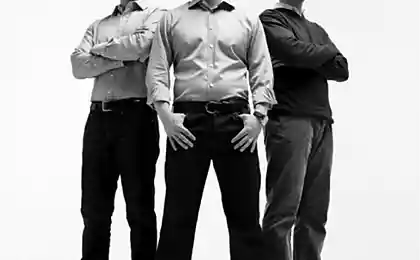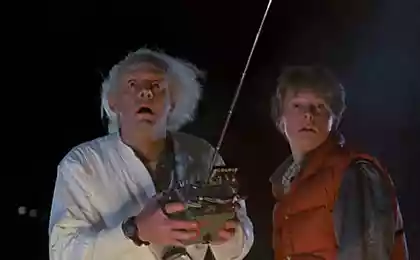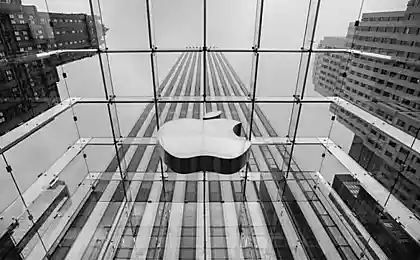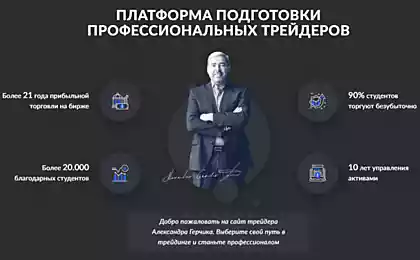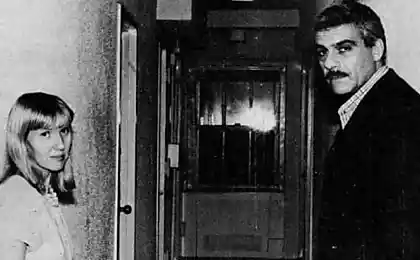1260
Hunters wolves with Wall Street. Part 2
80,142,350
The adaptation of the book by Michael Lewis, "Quick boys» h4> [ This second part of a series of translations of adaptation of a recent book by Michael Lewis. The first part can be read here i> - approx. pens.]
The adaptation of the book by Michael Lewis, "Quick boys» h4> [ This second part of a series of translations of adaptation of a recent book by Michael Lewis. The first part can be read here i> - approx. pens.]
People always thought , that once Brad Katsuyama - Asian, then it must be a computer genius. In reality, he could not (or would not) even set up your digital player. What he really could - so it is to distinguish which of IT professionals really knew his stuff, and someone - no. So he is not particularly surprised when a RBC [ Royal Bank of Canada, Royal Bank of Canada i> - approx. pens.] eventually stopped trying to find someone who could bring order to their electronic trading, and asked him, Katsuyama, take this task on yourself. He, however, seriously puzzled friends and colleagues so that he agreed to take on this, despite the fact that: a) he already had a calm and "cushy" job management "alive" by traders, for which he received $ 1, 5 million. year and b) RBC had nothing to add to the process of electronic trading. The market was in disarray; large investors needed only a few trading algorithms that spread brokers, and Goldman Sachs, Morgan Stanley and Credit Suisse has long occupied this niche.
So Katsuyama headed the business under the name of electronic trading - despite the fact that he could only sell useless software from Carlin Financial. What he had at that moment was in excess, so it is a question to which no answer. Why, for example, in the range from public stock exchanges and dark pools to [liquidity] - private exchanges, which are created by banks and brokers do not report in real time on their trading activity - there are no less than 60 organizations, mostly located in New Jersey, where You can buy any share, is listed on the stock exchange? Why on one exchange you pay for some action - for example, the sale of the shares, while on the other for the same action with you, on the contrary, charge a fee? Why is the state of the market on computer screens with Wall Street is a fiction?
Katsuyama Park hired Rob (Rob Park), a gifted IT professional, that he explained to him what is really happening inside all of these "black boxes" with Wall Street, and together they began to assemble a team to investigate what is happening on the US stock market. Once the team was formed, Katsuyama persuaded his superiors in the RBC go that resulted in a series of experiments. Over the next few months, he and his boys were planning to trade stocks, not for profit, and to test their theory. At RBC agreed to give the team the opportunity to spend up to $ 10,000 a day to figure out why the state of the market for each of the selected action to radically change every time in the RBC tried to spend time with her or that trading. Katsuyama Park asked to reflect on what the theory can not explain it.
They started with the public markets, there are 13 stock exchanges located in four different places and headed NYSE, Nasdaq, BATS and Direct Edge. Park was the first theory is that the markets are not grouped together all orders at the same price, and have them in a certain sequence. You and I can enter an order to buy 1,000 shares of Intel at $ 30 apiece, but you can somehow get the right to cancel your order if the mine was executed. "We started strong in the opinion that people were canceling orders," - says Park. "What were these phantom orders».
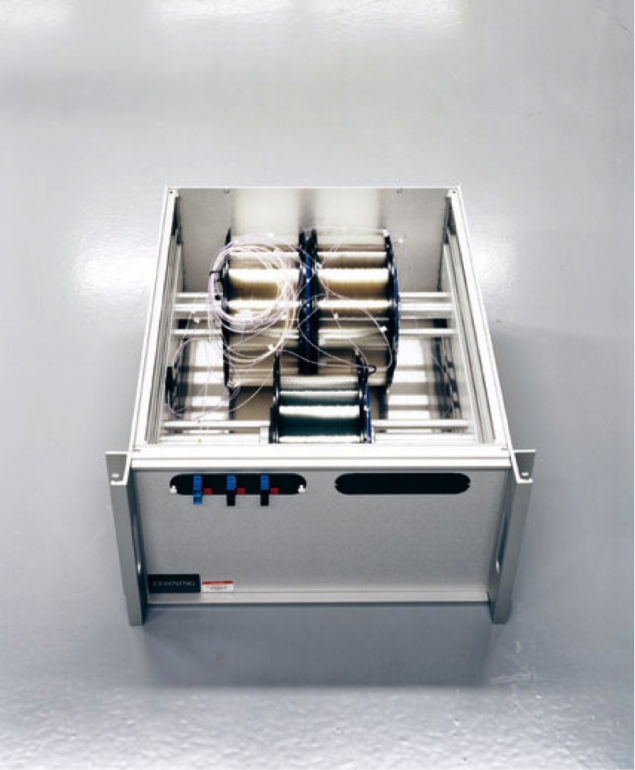
This box is stored in a building in Secaucus, New Jersey, contains 38-mile fiber optic cable, which creates a slight delay in the processing of orders, thus equalizing the chances of different traders. I>
Katsuyama tried to send the order to separate the selected stock exchange, is almost sure that it can confirm that some or even all exchanges allow the appearance of phantom orders. But no, to his surprise, he found that on the order sent to a particular exchange, he could safely buy shares for sale. What he saw on the computer screen really was the real state of the market. "I thought ... with her, with this theory," - says Katsuyama. "And I think the other theories we have».
This made no sense: Why market data on a computer screen are real, if send a warrant for the particular exchange, but cease to be true if the order is sent to all exchanges at once? The team began to send groups of warrant exchanges in various combinations. The first were the NYSE and Nasdaq. Then the New York Stock, Nasdaq and BATS. Then the New York Stock, Nasdaq BX, Nasdaq and BATS. And so on. And the further advance the cause, the more everything becomes mysterious. The more exchanges on the list, the less percentage of order execution, getting more platforms on which they want to buy the shares, the less share them eventually able to buy. "There was only one exception," - says Katsuyama. "However much we may send SEC orders, we are always able to buy all the shares offered for BATS». The park was not this explanation: "I just decided that BATS, must have a great exchange!».
One morning, during the shower Rob Park came up with another theory. He tried to imagine what he saw before a graph showing how long it takes orders from the computer sending Brad Katsuyama, located in the World Financial Center, to each of the exchanges.
The amount of time required for this operation, was fantastic tiny: in theory the fastest order from the computer Katsuyama in Manhattan reached BATS Exchange in Vihokene, New Jersey - it took two milliseconds. The longest warrant went to the Nasdaq market Carteret, New Jersey - it took four milliseconds. In practice, these numbers can vary significantly depending on the traffic on the network, as well as hardware failures between two points. Even a quick blink need 100 milliseconds - and the harder it was to believe that over time, less than we spend on the blink, can happen something that has real effects on the market. Jen Allen (Allen Zhang), which Katsuyama Park and was considered the most talented programmer in the team, wrote the code, embedded "delay" in the process of sending orders to "nearby" the exchange, so that they came there at the same time as on the stock exchange "remote." "It was illogical," - says Park, "because everyone told us, the sooner the better. We would have to be accelerated, and we, on the contrary, tried to slow down. " One morning they sat down to test the program. When sent from a PC buy order, which in the end was not performed, the screen lights up red. When the order is executed partially - brown, and when executed entirely - green.
And this time, the screen will display green.
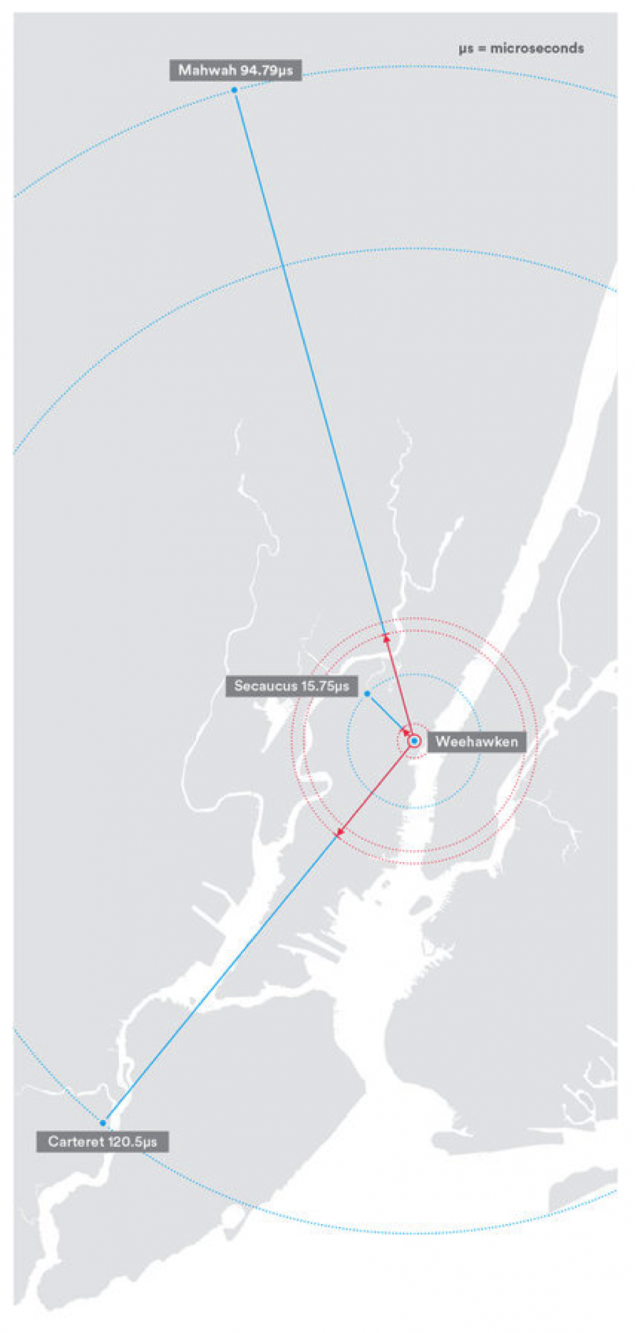
Speed Trading
In microseconds, required high frequency traders to warrant it reached various stock exchanges located in the cities of New Jersey (blue line), the order of the ordinary trader usually goes away only marked in red. Time gap - which is now under the supervision of the Attorney General of New York - can in some cases carry the financial benefits. I>
"It was in 2009," - says Katsuyama. "Until then, I observed a similar pattern for two years and has not exactly been the first who found out what actually happens. So what happened to the others? "The answer, apparently, was contained in the question: all those who take care of the problem, trying to earn it.
Now he and RBC got a tool that could be sold to investors, a program written Zhenem that embeds the delay in the process of sending orders. This tool allows the trader, such as Katsuyama, do their job - to take risks on behalf of large investors to trade large volumes of shares. Now these traders could again trust the numbers on the computer screen. The program will need a name. The team scratching their heads, until one day some trader has not jumped up shouting, "Dude, you should call this thing Thor [Thor]! Hammer! »[ In the original article, and hammer, and the Torah itself is called the same, but the" canonical "name of Thor's hammer - Mёllnir (Mjöllnir) i> - approx. pens.]. Someone asked to come up with a phrase that could be shortened to the acronym Thor - the word to pick, but nobody remembers. Program and began to call - Thor. "I realized that we have come up with something really worthwhile when the word Thor was used as a verb," - says Katsuyama. "When I heard someone shouted:« Thor it! ».
Another proof that they have found the right approach to the problem, began meeting Katsuyama with some of the largest investment managers in the world. First visit Katsuyama Park and struck Mike Gitlin (Mike Gitlin), who led the global trade in million of assets for the company and investment manager T. Rowe Price. Story they told, did not seem Gitlin complete surprise. "You could see how something has changed recently," - said Gitlin. "You could see that when you try to trade stocks, the market understands what you are going to do, and starts to move against you." But Katsuyama outlined a much more detailed picture of the stock market - the picture that Gitlin hardly imagined - and in this market, everything seemed suspicious. Brokerage company with Wall Street, which decides whether to send the order to the market to buy or sell from T. Rowe Price, had a huge impact on how and where to perform these orders. However, some exchange brokerage companies pay for their orders, while others are themselves charged a fee for it.
Does not affect whether this is where the broker decides to place an order - even if the decision went against the interests of investors who broker was supposed to represent? No one knew for sure. Another suspicious activity was the "fee for order flow." By 2010, every brokerage firm in the United States and all the online brokers to trade effectively in auctions orders of their clients. Online broker TD Ameritrade, for example, to pay hundreds of millions of dollars annually, for the fact that he sent orders to the hedge fund called Citadel, who worked with them on behalf of TD Ameritrade. Why fund Citadel was willing to pay so much for the opportunity to observe the order flow? Nobody knew for sure what was the benefit of Citadel.
Katsuyama and his team calculated how much cheaper they are buying stocks when eliminated the likelihood that some unknown traders can hold anticipatory deal. For example, they bought 10 million shares of Citigroup, and then, when the shares were trading at $ 4 apiece, helped them with $ 29 000 - or less than 0, 1% of the total price. "It was almost" imperceptible "collection" - says Park. This amount seems small, until you know that the average trading volume in the US in one day is $ 225 billion. A collection of all of this amount is almost $ 160 million a day. "This is so cleverly managed to crank out because you're nothing could know," - says Katsuyama. "It happened in such a tiny scale [ at a huge rate of operations per unit time i> - approx. pens.] that even if you tried to bring the whole process to clean water, you could not do it. Men cheat because they can not imagine a microsecond. "
Source: habrahabr.ru/company/itinvest/blog/220363/
The future of retail: shopping online and win the future
Smartphone with a 3D scanner space from Google joined with NASA SPHERES robots to work on the ISS








